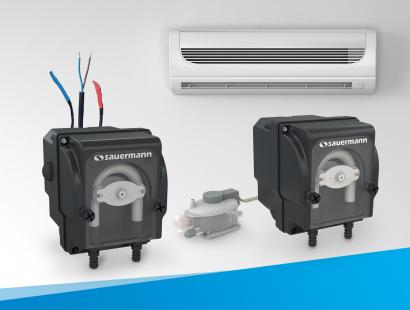The Next Evolution in Air Conditioning Safety

Before air conditioning, people living in buildings used a variety of methods to keep cool.
In much earlier times, to ensure comfortable living conditions, buildings were often designed with much larger windows and higher ceilings.
In the United States, the dogtrot house was popular in the 19th and early 20th centuries. It was designed with a large breezeway through the center of the house to cool occupants. It was separated into two smaller cabins -- one for cooking and the other for living.
In 1902, the first modern electrical air conditioning unit was invented by Willis Carrier in New York. In 1906, Stuart Cramer of North Carolina coined the term ¨air conditioning¨ in a patent claim.
In the 1920s, innovations made air conditioning units smaller and safer. The first air conditioners and refrigerators used dangerous gases, such as ammonia, methyl chloride, or propane, that could result in fatal accidents when they leaked. In 1928, Thomas Midgley, Jr. created the first non-flammable, non-toxic chlorofluorocarbon gas, Freon. Since then, modern refrigerants have been created in a more environmentally-safe manner. In 1945, Robert Sherman of Massachusetts invented a window air conditioner that cooled, heated, humidified, dehumidified, and filtered the air.
Early air conditioning units and many units to this day often utilize gravity-based drainage to remove the excess water created during the cooling process. However, these often require a network of unsightly ductwork and vents, and water can often leak or stagnate, which is not efficient and can even cause property damage and other health concerns.
Condensate removal pumps are designed to raise the condensate to a certain height and pump it into a drainage outlet. They were first developed in the 1950s to remove condensate in mechanical refrigeration and air conditioning units.
Sauermann mini condensate removal pumps take this technology to the next level with their patented piston technology and high reliability, and have a number of advantages over competitor mini pumps that are on the market today.
They appeal to installers and distributors alike because they are easy to install, very quiet, and protect the appearance of the customer’s installation. These pumps, by removing condensate to a drainage pipe, also remove a number of health and leakage risks that are associated with stagnant water.
Our mini-pumps are ideal for home, office and commercial settings and can be found in some of the leading buildings in Europe, such as the Shard in London and other buildings that value high reliability.
Air conditioners and condensate removal pumps have evolved considerably since the last century, and our mini condensate removal pumps are the next evolution in keeping cool safely.





Add new comment